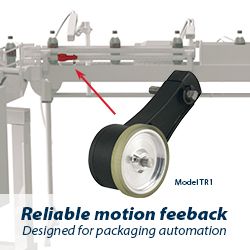SwRI develops new robotics image processing tools to automate aircraft surface preparation
Roboticists to demonstrate Scan-N-PlanTM solutions, 3D reconstruction framework at Automate 2022
SAN ANTONIO — June 6, 2022 — During the Automate 2022 trade show on June 6-9 in Detroit, Southwest Research Institute is introducing new automation technology that allows industrial robots to visually classify work and autonomously perform tasks.
SwRI's Automate Booth (No. 1707) will feature an interactive demonstration of robots that autonomously sand and prepare surfaces on aircraft and other machinery. The technology can be applied to grinding, painting, polishing, cleaning, welding, sealing and other industrial processes.
"Our solutions increase process repeatability while improving part quality and decreasing rework," said Matt Robinson, a robotics R&D manager at SwRI. "They also reduce human exposure to dangerous environments."
The system uses SwRI-developed machine learning algorithms and classification software that work in conjunction with open-source tools such as Scan-N-PlanTM and ROS 2, the latest version of the open-source robot operation system. Traditional robot programming can be slow and tedious, requiring an expert in the loop with knowledge of computer aided design (CAD).
Scan-N-Plan, a ROS-Industrial technology, uses machine vision to scan parts, creating 3D mesh data that robots use to plan tool paths and process trajectories while performing real-time process monitoring. SwRI works closely with the ROS-I project to maintain its software repository and expand open-source automation solutions.
"By leveraging these open-source tools with our custom software, we have developed a solution that intelligently classifies regions and textures of part surfaces in various stages of work," Robinson said.
The solution includes custom machine vision algorithms that enable robots to apply various media with varying pressure based on the amount of surface work needed. Feature-based processing is also enabled through additions that leverage semantic segmentation approaches to apply the right tool to the right feature, cutting versus sanding for instance.
"These are breakthroughs that will help prevent robots from over-sanding or over-grinding metal surfaces," said Paul Evans, director of SwRI's Manufacturing Technologies Department. "It is exciting to leverage the open-source community with our custom robotics engineering."
This project demonstrates the advanced features of ROS 2 while providing an initial framework for additional application build-out. It is also an open-source example for teaching and training those interested in developing advanced solutions that leverage ROS.
"SwRI is excited to be providing proven solutions that leverage this framework to the commercial and government industrial client base, across a broad array of applications, for both stationary cell-based systems and mobile solutions," added Robinson.
At Automate, SwRI will also share a new industrial reconstruction framework that creates high-fidelity mesh maps of objects. An onboard camera overlays the map to create a colorized mesh to facilitate advanced processing. The combination of 2D, 3D and color classification drives more intelligent processing. This new capability will be made available via the ROS-Industrial open-source program.
Following Automate, SwRI will host the ROS-Industrial Consortium Americas annual member meeting in Detroit on June 9-10. Visit https://rosindustrial.org/ for more information.
To learn more about SwRI's Scan-N-Plan demonstration, watch a video at https://www.youtube.com/watch?v=Vr-t0U7vSXQ or visit https://www.swri.org/industries/industrial-robotics-automation.
------------------------------------------------
About SwRI:
SwRI is an independent, nonprofit, applied research and development organization based in San Antonio, Texas, with more than 3,000 employees and an annual research volume of nearly $726 million. Southwest Research Institute and SwRI are registered marks in the U.S. Patent and Trademark Office. For more information, please visit www.swri.org.
Featured Product

Model TR1 Tru-Trac
The Model TR1 Tru-Trac® linear measurement solution is a versatile option for tracking velocity, position, or distance over a wide variety of surfaces. An integrated encoder, measuring wheel, and spring-loaded torsion arm in one, compact unit, the Model TR1 is easy to install. The spring-loaded torsion arm offers adjustable torsion load, allowing the Model TR1 to be mounted in almost any orientation - even upside-down. The threaded shaft on the pivot axis is field reversible, providing mounting access from either side. With operating speeds up to 3000 feet per minute, a wide variety of configuration options - including multiple wheel material options - and a housing made from a durable, conductive composite material that minimizes static buildup, the Model TR1 Tru-Trac® is the ideal solution for countless applications.
